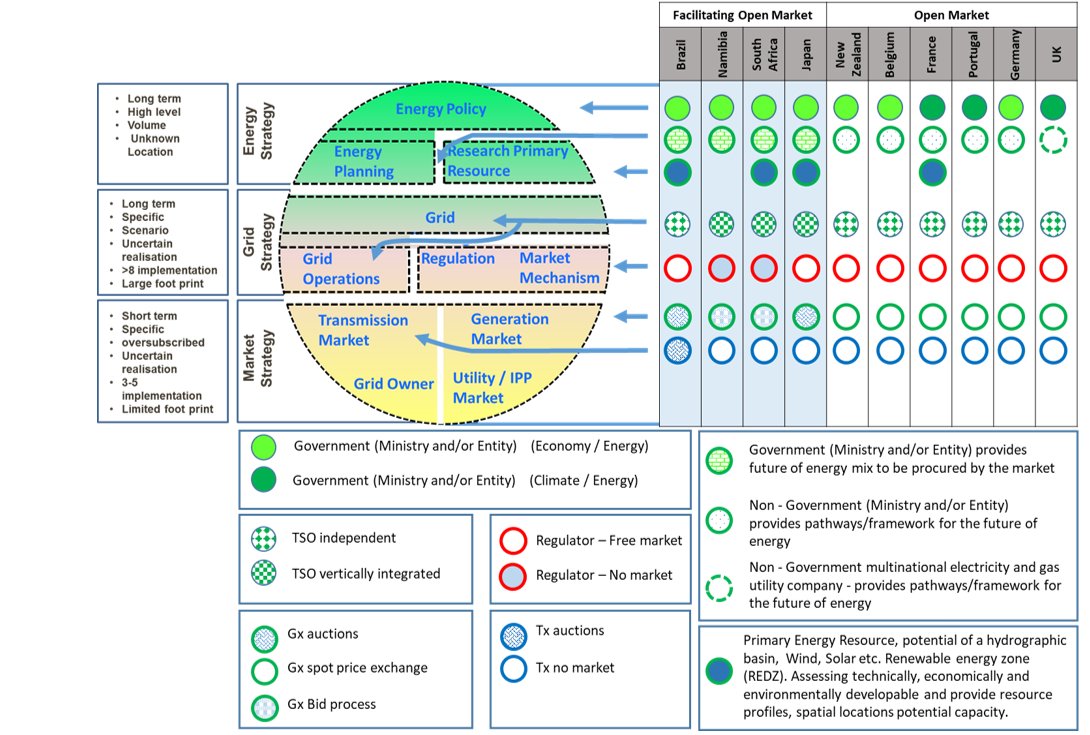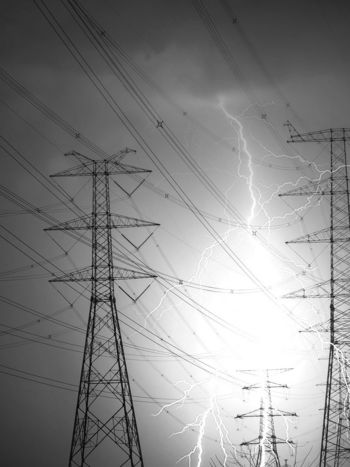Transmission investment decision points and trees
The Electricity Supply Industry (ESI) has evolved significantly over the past two decades and continues to evolve at a rapid pace. Utilities have changed from vertically integrated monoliths into smaller, unbundled, and market driven entities. There have been significant changes in generation markets; generation and smart grid technologies; load profiles; mobile loads (electric vehicles); and generation lead-time to market. On the other hand, the grid expansions have seen a much-increased time lag in developing and implementing new transmission grid. The increased time to develop new grid is largely due to increased environmental requirements and public participation in acquiring acceptable rights of way (servitudes) to construct new grid. Also, obtaining the necessary financial approvals for grid expansions has become increasingly difficult, underpinned by increased pressure to reduce cost and regulatory acceptance of price increases.
Members
Convenor (NZ)
Ronald MARAIS
Secretary (NA)
Gert FOURIE
Hakan ERGUN (BE), Ricardo PEREZ (BR), Yoshihisa NAKASHIMA (JP), Daisuke SEKIGUCHI (JP), Graeme ANCELL (NZ), Daniel CLARKE (UK), António PITARMA (PT), Gregoire PAUL (FR), Marius SIEBRICHS (DE), Caswell NDLHOVU / Kevin LEASK (ZA)
Introduction
Long-term transmission planning is required to ensure that reliability and security criteria are met for the future growth. Target networks are often used to model the potential future network and assess the required voltage levels and technology. The target network is premised on several variables such as load growth and location, future generation expansion and location as well as technology selection.
Target networks represent the preferred network at the end of the specified period to meet all the necessary criteria and requirements. The uncertainty of future generation and its location results in multiple potential target networks and potentially creating several decision trees outcomes. The Working Group examines processes used to determine the timelines of the decision points in the different countries and the methods used.
Aspects covered in the Technical Brochure
This report investigates the uncertainty of future generation and its location results in multiple potential future scenarios. Each scenario may result in a different expansion network plans which may have key decision points to expand the network to remain compliant. The various target networks may result in diverging network strengthening creating a number of decision trees. The methodology of constructing the scenarios and moving from various scenarios to target network for different countries is not clear. Hence, the key interest of this work group is to determine how each country constructs the scenarios and moves from the various scenarios to identify key decision points affecting target network. To establish current international practice each country provided their experience of how scenarios are created and then developed into target networks.
The TB is organized to support the readers in finding the areas of greatest interest or greatest value.
Chapters 1 and 2 introduce the TB and the WG.
Chapter 3: ESI comparison framework -This chapter provides the detail on how the work group established a single simplified ESI framework to enable the comparison of the different countries. The simplified ESI framework provides the work group with a common context for each country to provide information for comparison. Within the simplified ESI model framework each country provided the key actors/stakeholders and the interrelationship between them. The information obtained was arranged as follows:
- Power Sector Institutional Structure – An outline of the ESI per country within the ESI Simplified model perspective was produced. A simplified ESI model diagram provides an overview of all key actors/stakeholders and the key interaction processes.
- Power Sector Institutional Framework – Each country provided a detailed description on the key role players, processes and activities conducted, key outputs and an overview of the planning process.
- Power Sector Information Summary Table – Within each of the ESI Framework sections, countries provided the key activity, key Institution, and key documents produced indicating which are available to the public, the frequency of issue, the period covered and a source link to Web site location.
Chapter 4: Target network assumptions and construction – this chapter examine how each country compiled their target network and where critical decisions are made and describes the model that simplifies the target network process into three key areas, namely Energy Strategy, Market Strategy and Grid Strategy. The chapter further describes the flow of information to establish the target network to enable the examination of the information provided by the energy and market strategies to construct the base target network scenarios.
Chapter 5: Summary 1 - ESI comparison framework - In this chapter the simplified ESI model developed in Chapter 2 is used to summarise the feedback received from the participating countries. The simplified ESI model has three sub-areas of comparison, namely Energy Strategy, Grid Strategy, and Market Strategy.

Chapter 6: Summary 2 - Policies and stakeholders -This chapter examines how the information flows from the policies into the energy strategy and market strategy and are used to establish the future network assumptions scenario known as the target model assumptions. A...




